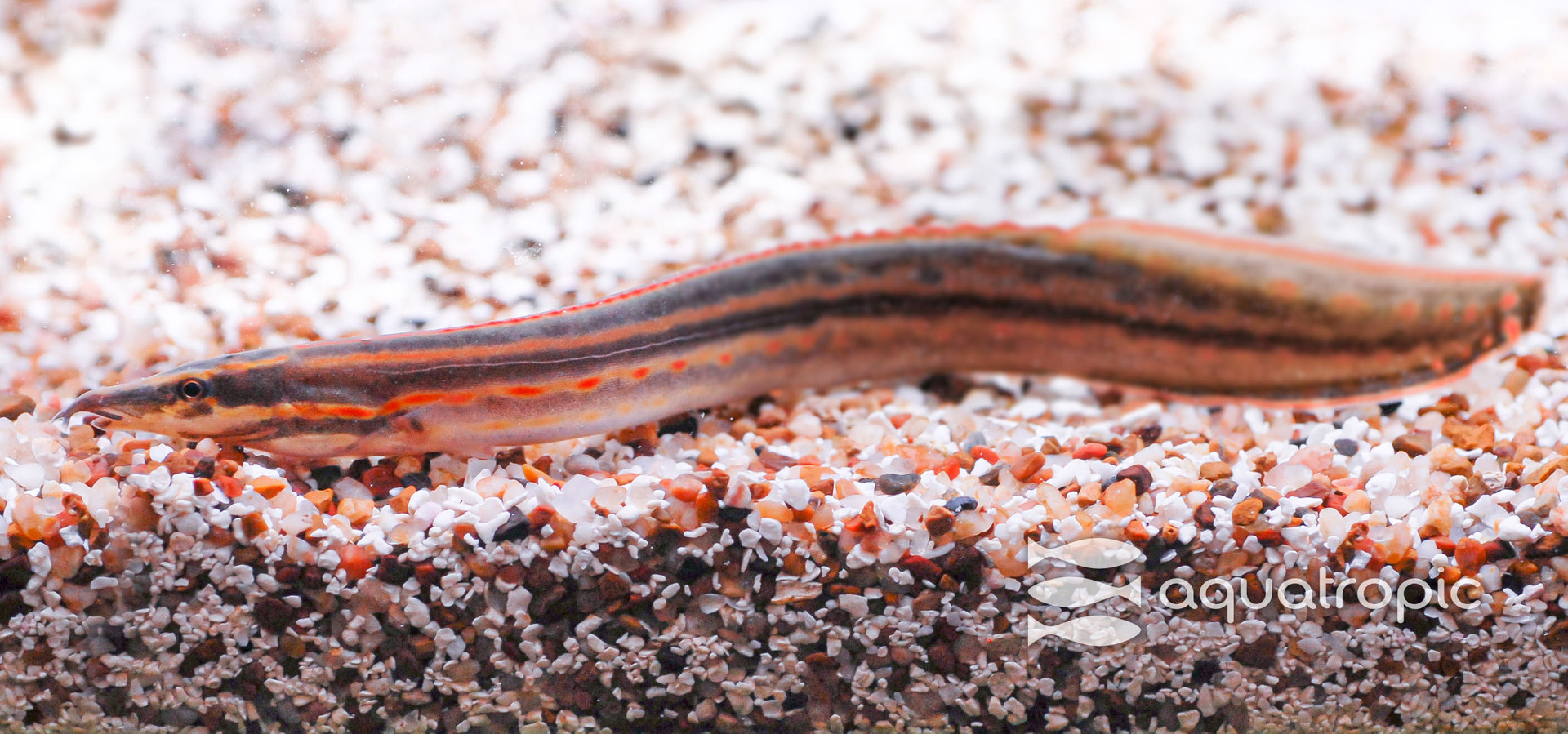Masta Mania

The Fire Eel (Mastacembelus erythrotaenia) is a member of the family of spiny eels (Mastacembelidae). They are a beautiful fish with a combination of red stripes and spots, reaching a length of about a meter (a little more than three feet)! This makes them one of the largest species of spiny eel.
M. erythrotaenia is found throughout Southeast Asia, especially in areas of slow moving water. Think swamps and backwaters of slow moving rivers. Because of this they will appreciate a dimly lit aquarium, with a fine substrate (make sure your sand doesn’t have sharp edges), and potentially plants, especially floating plants or riparium plants in planters. They do like to burrow into sand and mud in the wild, and so as they get larger they may accidentally uproot any plants growing in the substrate.
Reaching three feet in length, the fire eel will require a larger aquarium in the long term. A 120 gallon aquarium (4’x2’x2’) would be the minimum tank size anyone should consider keeping one in. Fire eels are nocturnal or crepuscular meaning that they are either active at night or during dawn/twilight hours. Because of this they will appreciate a dimly lit aquarium, floating or riparian plants, and other decorations for them to use for cover. If not given any of these options a Fire Eel will either try to escape, or burrow into the substrate – cover the tank tightly to prevent jumpers and offer a fine substrate for them to burrow into if they need to. Once the fish has settled into its new habitat if you are still not seeing it, you may need to dim your lights, or add more cover for them in the tank to feel secure in the open. Over time they can become increasingly interactive and learn to accept food from you even with the lights on.
Wild M. erythrotaenia are mainly insectivorous – meaning they mostly eat bugs! There are a ton of great options for them from blood and black worms to insect protein flakes and pellets becoming more and more available in the trade these days. In the end its always best to keep your fish away from live food – and luckily Fire Eels can be fairly easily trained to take food from your hands or a pair of tongs, so they are pretty eager feeders. They enjoy fairly small food items – so make sure that your filtration is adequate to handle a large fish (1m) that will eat a lot of small food particles that can be messy if he/she misses them. As with many nocturnal fish, if you are having issues getting them to feed try feeding right before the lights come on, or shortly after they turn off.
While Fire Eels have reproduced in captivity, very little is known about it and mostly it has happened in large aquaria with large fish. Males and females are moderately sexually dimorphic (meaning males and females look different) with males tending to be smaller and brighter colored, and females larger and duller. A female in breeding condition will become more plump as she fills with eggs. A word of caution on breeding Fire Eels – they frequently can be aggressive towards similar looking fish. So keep a watchful eye on any attempted pairings.
Fire Eels are gorgeous, unique, intelligent fish that would make a great choice for a species tank or larger, peaceful oddball community tank. Lots of hiding places, appropriate food, a securely covered aquarium, and clean water will result in a fascinating water pet for years to come!